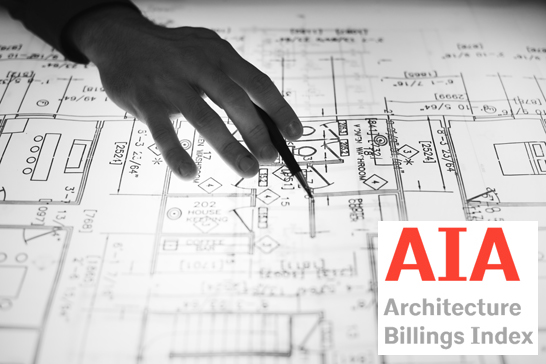Architectural Billings Decline Again In January But Trend May Be Soon Reversing
 Washington, DC – Fewer architecture firms report declining billings in January compared to billing activity in December, according to a new
report from The American Institute of Architects (AIA). AIA’s Architecture Billings Index (ABI) score for January was 49.3* compared to 48.4 in December (any score below 50 indicates a decline in firm billings).
Washington, DC – Fewer architecture firms report declining billings in January compared to billing activity in December, according to a new
report from The American Institute of Architects (AIA). AIA’s Architecture Billings Index (ABI) score for January was 49.3* compared to 48.4 in December (any score below 50 indicates a decline in firm billings).
Last month’s score indicates overall revenue at U.S architecture firms continued to decline from December to January, however, the pace of decline slowed. Inquiries into new projects during January grew, with a score of 55.2 compared to 52.6 in
December. The value of new design contracts also reflected an easing in the pace of decline, rising to a score of 53.4 in January from 50.0 the previous month.
“While the downturn in design activity extended to four months in January, there are signs of easing,” said AIA Chief Economist, Kermit Baker, Hon. AIA, PhD. “In particular, architecture firms reported that new project work has begun
to increase, signifying that this decline in billings may reverse in the coming months.”
Key ABI
highlights for January include:
• Sector index breakdown: mixed practice (56.0); institutional (48.6); commercial/industrial (46.8); multi-family residential (45.9)
• Regional averages: Midwest (51.6); West (51.3); Northeast (50.9); South (46.9)
The regional and
sector categories are calculated as three-month moving averages and may not
always average out to the national score.
*Every January the AIA research
department updates the seasonal factors used to calculate the ABI, resulting in
a revision of recent ABI values.
Visit AIA’s website for more ABI information.
About The American Institute Of Architects
 For over 150 years, members of the American Institute of Architects have worked with each other and their communities to create more valuable, healthy, secure, and sustainable buildings and cityscapes. Members adhere to a code of ethics and professional conduct to ensure the highest standards in professional practice. Embracing their responsibility to serve society, AIA members engage civic and government leaders and the public in helping find needed solutions to pressing issues facing our communities, institutions, nation and world. For more information, visit www.aia.org.
For over 150 years, members of the American Institute of Architects have worked with each other and their communities to create more valuable, healthy, secure, and sustainable buildings and cityscapes. Members adhere to a code of ethics and professional conduct to ensure the highest standards in professional practice. Embracing their responsibility to serve society, AIA members engage civic and government leaders and the public in helping find needed solutions to pressing issues facing our communities, institutions, nation and world. For more information, visit www.aia.org.